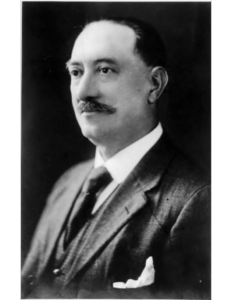In late May, the deaths of George Floyd in the United States and Regis Korchinski-Paquet in Canada, each at the hands of the police, provoked an international movement condemning anti-Black racism and police brutality. In the months since, Canadian police have also killed Chantel Moore, Rodney Levi, and Ejaz Choudry, reinforcing the calls for action to address police violence against BIPOC communities in Canada.
There is now a greater sense of urgency in this country in the fight against systemic racism. These issues extend beyond just law enforcement; white supremacy and systemic inequities are prevalent in all industries, including the arts and orchestras. Many people have taken to writing about the arts and non-profit sectors to explain these inequities and provide insights to what long-term change could look like.
Reading list compiled by Nina Jeftic, Equity Coordinator, Orchestras Canada (summer 2020)
We Must Breathe – Why it is important to talk about race and racism in the context of classical music by Lukas Krohn-Grimberghe (WQXR), June 2020
In the article “We Must Breathe – Why it is important to talk about race and racism in the context of classical music”, Lukas Krohn-Grimberghe dives into why classical music, an art form often considered to be universal and meant for everyone, benefits from white privilege and is inaccessible to many. While classical music remains overwhelmingly white, Krohn-Grimberghe highlights why conversations about race in the context of classical music are relevant to the ongoing conversations of systemic racism within society.
Time to finally deal with racism and discrimination in Canadian charities, Shanaaz Gokool (Toronto Star), July 2020
Shanaaz Gokool delves into the world of Canadian charities and not-for profits to discuss the discrepancies that occur between their public mandates and private behaviours. Gokool notes that the pandemic continuously shines a bright light on systemic inequities that appear within these organizations, and calls for the sector to act and make changes that will create long lasting change and put an end to these inequities. She discusses major areas that all not-for profit organizations can improve on, from redefining roles within the organization to implementing new management requirements.
Give Us Permanence—Ending Anti-Black Racism in Canada’s Art Institutions, Syrus Marcus Ware, June 2020
In “Give Us Permanence—Ending Anti-Black Racism in Canada’s Art Institutions”, Syrus Marcus Ware writes about Canadian art institutions needing to go beyond their Black Lives Matter statements and acknowledge the inherent racism and white supremacy that has and continues to exist within them. He discusses the important work of Black artists and curators and presents ways to achieve long lasting structural changes within arts organizations, considering both a shift in power dynamics as well as the works showcased.
A Crisis of Whiteness in Canadian Art Museums, Sean O’Neill, June 2020
In his article, Sean O’Neill surveys the boards and senior executive teams of the four largest public art museums in Canada, finding that they are overwhelmingly white. While most of these organizations make efforts to diversify their exhibition programming, O’Neill calls this “outward -facing progress”, as artists and curators are not in charge of making decisions that are be instrumental to seeing systemic change within arts institutions. His article explains why this overwhelmingly white leadership needs to change in order for public art museums to effectively hold themselves accountable and serve their communities.
An Open Letter to Arts Organizations Rampant with White Supremacy, Nana Chinara, May 2020
“An Open Letter to Arts Organizations Rampant with White Supremacy” is a personal account of Black queer femme artist Nana Chinara, who details her recent experiences working in the arts. Chinara discusses an ongoing grant process in which she was mistreated and the lack of accountability from her employers, even after challenging them to take responsibility. Her article highlights that these mistreatments were all choices made by her employers and discusses the numerous ways in which white supremacy affects Black artists in the industry. She provides several suggestions to organizations to uproot the white supremacy ingrained in them.
A Collective Awokening in the Performing Arts, Michael Zarathus-Cook, June 2020
Michael Zarathus-Cook writes about the performing arts world and explains that the idea of diversity alone does not create a safe space for BIPOC artists, the industry needs to begin to foster a culture of inclusivity. He discusses the need for inclusivity in every aspect of the organization in order to create these spaces, not just in works programmed and performers featured, and that inclusivity extends beyond race. Hosted by Against the Grain Theatre, Zarathus-Cook led two panels as a follow-up to his article featuring BIPOC, LGBTQ2S+, and disabled artists where they discuss the need for equity in the performing arts and what changes can be implemented.
A Collective Awokening in the Performing Arts Panel part 1
A Collective Awokening in the Performing Arts Panel part 2
8 Ways People of Color are Tokenized in Nonprofits, Helen Kim Ho, September 2017
In efforts to diversify or be more inclusive, many organizations may try to recruit or highlight their BIPOC staff/work, which often leads to them being tokenized. In her article, Helen Kim Ho discusses why these organizations, who are dedicated to the common good, so frequently have adverse outcomes to their diversity and inclusion initiatives. She reviews 8 ways that people of colour are tokenized within non-profit groups and why each of these is harmful to those individuals affected.
Open Letter to Directors, Executive Directors, and CEOs of Canadian Charities and Non-Profits, Senator Ratna Omidvar, June 2020
In this open letter, Senator Ratna Omidvar reveals that a majority of non-profits in Canada do not collect data on the diversity of their employees and leaders. Collecting this information annually would be a way to hold these organizations accountable as well as see if and how progress is being made. Senator Omidvar claims that when it comes to diversity, “the sector’s spirit is willing, but it’s flesh is weak”, and calls for the non-profit sector to be leaders in the battle against racism through this crisis
Nonprofits and Foundations Are Unintentionally Promoting Racism: Here’s How to Stop, Michele Norris and Sean Gibbons, February 2019
Michele Norris and Sean Gibbons confront the issues of racism in non-profits head on and discuss how these issues are intertwined with the environment we live in (while their focus is on America, these claims ring true in Canada as well). They write about the influence of the sector and why they cause unintended harm. The article goes through an example of this and discusses the steps taken to reduce it. Norris and Gibbons call for honest introspection within the non-profit world as part of the necessary practices that need to be built to combat racism.
Dear White Orchestras, Alexander Laing (Arts Journal), January 2017
When discussing the lack of Black and Brown people orchestras, Alexander Laing claims that the majority of discussions center around a universalist ethic, where it’s assumed that orchestral music is a universal artform. In his articles, he challenges readers and those part of the classical music/orchestral world to move towards a particularist ethic when discussing issues of race, a definition he borrows from author Jennifer Harvey which “recognizes that there is no one shared standard against we might measure or interpret our experiences of race, nor one to which we may all be held similarly accountable.”
Notes on Racism, and White Supremacy In Classical Music, Brandon Keith Brown, May 2020
Conductor Brandon Keith Brown comments on how racism and white supremacy have personally impacted him and his career in “Notes on Racism, and White Supremacy in Classical Music”. He calls for white people to start doing anti-racist work within themselves. Brown believes that classical music belongs to everyone, and states that a “visceral commitment to include Black artists, audience, artist managers and administrators in their business plan” will be essential to the long-term survival of any orchestra.
Can the arts world fight systemic racism in a real way instead of resorting to tokenism?, Zainub Verjee, June 2020
Zainub Verjee provides an overview of the Canadian arts world, citing several examples from across the country of various artistic responses to social movements. She points out that these struggles are “wiped out of the public memory”, and that the motivations behind diversity are business related. Verjee questions whether the current climate will be enough to begin a commitment to fighting systemic racism on an ongoing basis, or if this crisis will join the others as tokenistic responses.
I’m tired., Andrew Adridge, July 2020
Andrew Adridge, a Toronto-based Guyanese-Canadian baritone writes a vulnerable work sharing his perspective as a Black performer in the classical music industry. He asks members of this community to start to speak out and advocate for Black and Indigenous people. While Canada has a multicultural population, Adridge notes that nothing else has been done by us as a country to prove we are a multicultural country.
REMOTE | Andrew Adridge ‘The Way The Industry Is Currently Structured, I Have No Business Hoping To Be In It’, Michael Zatharus-Cook, June 2020
Michael Zarathus-Cook sits down with baritone Andrew Adridge to discuss the current #BlackLivesMatter movement and changes that need to happen in the performing arts community. Adridge states that the lack on accountability being taken in Canada leads to what he calls “Performance Representation”. He envisions “Authentic Representation”, where “an underrepresented person can actualize a path to belonging”. Adridge explains that the classical music industry plays a role in the #BlackLivesMatter movement, which is a problem beyond just law enforcement.
Art is integral to Black Lives Matter: a conversation with Dr. Kristin Moriah, Nathan Gallagher, June 2020
Nathan Gallagher speaks with English professor Dr. Kristin Moriah to discuss the role of art as a catalyst for social change. Focusing on Black Lives Matter- Toronto, Moriah notes that several of their founding members are arts practitioners and that one of their first actions to attract attention was a piece of performance art- when they temporarily stopped Justin Trudeau’s float at the Toronto Pride Parade. She comments that art and literature provide a different element of understanding to people, and that engaging with Black art can help deepen the insights of those who don’t comprehend the Black experience.
Why we need Black and Indigenous leadership at Canada’s top museums now more than ever, Syrus Marcus Ware and Sean O’Neill, June 2020
Syrus Marcus Ware and Sean O’Neill call for urgent change within management in arts organizations. After the recent #BlackOutTuesday campaign, several people have spoken out about the racism they experienced at these organizations. Both Ware and O’Neill advocate for structural change within these organizations to begin to combat the racism imbedded within them. Ware notes that it is only in the moments of unrest that museums choose to engage with Black artists, and thinks that including Black and Indigenous voices in management as well as regularly programmed artists will increase the excellency of the work featured.

 This past May 29th and May 30th, I attended the first-ever
This past May 29th and May 30th, I attended the first-ever  Former Classical Pianist and Composer
Former Classical Pianist and Composer CEO of Video Marketing Agency Jaxx Productions
CEO of Video Marketing Agency Jaxx Productions Cellist, founder of viral Instagram and YouTube success JHMJams
Cellist, founder of viral Instagram and YouTube success JHMJams Performing Arts Copywriter, Former National Sawdust PR Manager
Performing Arts Copywriter, Former National Sawdust PR Manager Founder of 7-figure online empire PianoIn21Days
Founder of 7-figure online empire PianoIn21Days Concert Pianist, Motivational Speaker, Entrepreneur
Concert Pianist, Motivational Speaker, Entrepreneur
